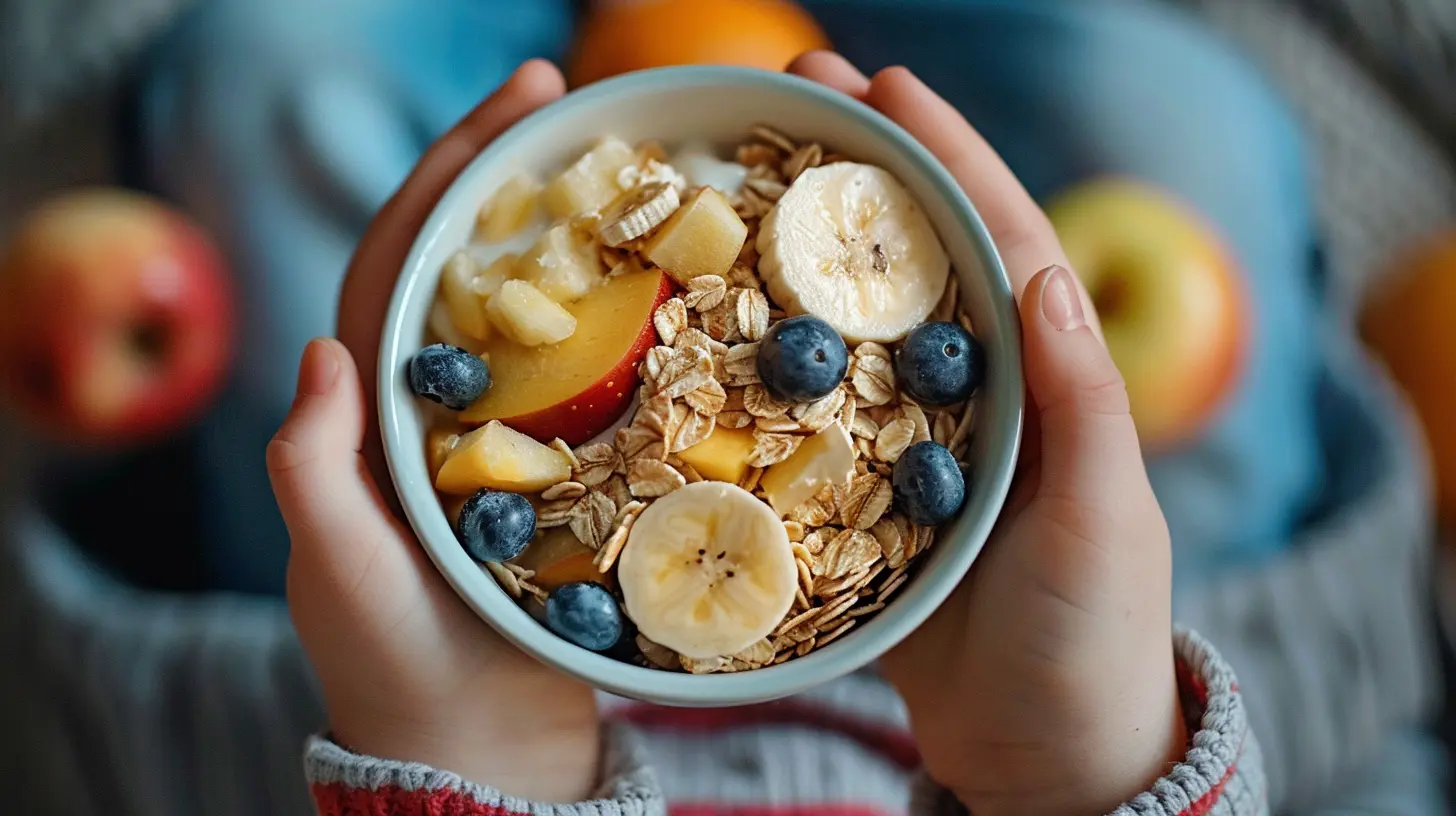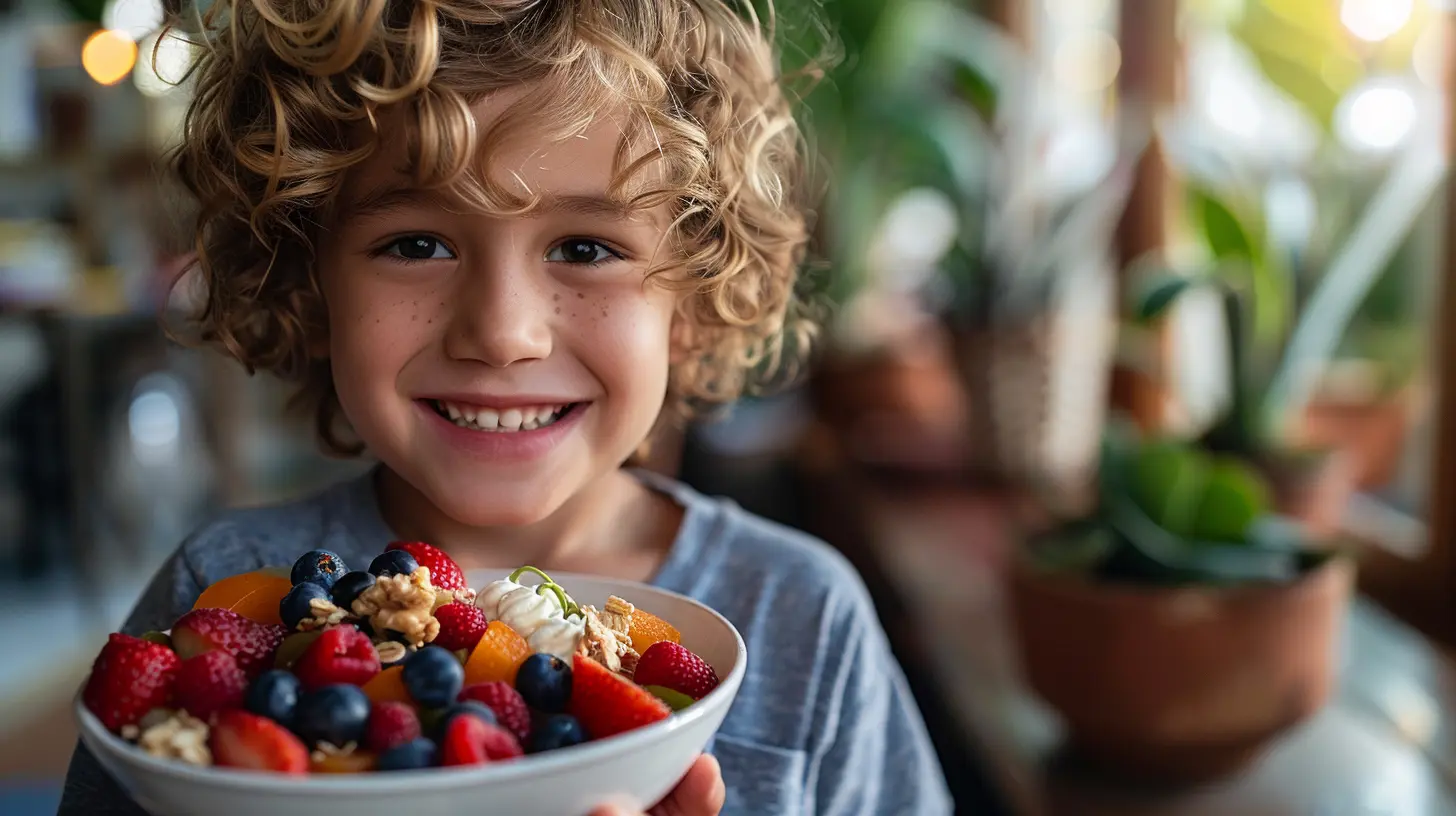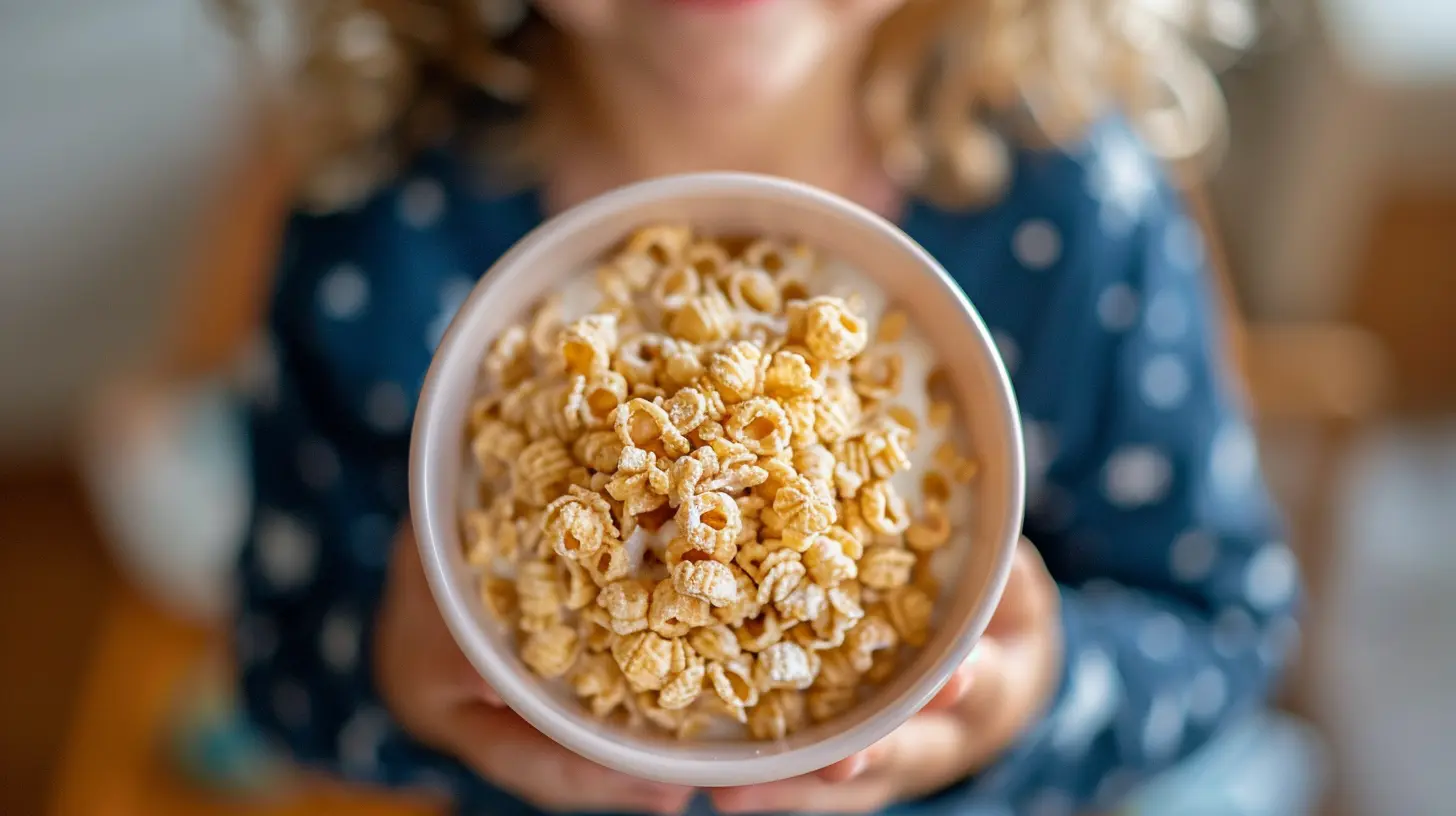The Role of Fiber in Your Child's Diet: Digestive Health Starts Early
25 August 2025
When most of us think about kids and nutrition, our minds jump straight to vitamins, fruits, and making sure they’re eating enough veggies (even if it takes some bribery). But there’s one crucial nutrient that often slides under the radar — fiber. It might not be flashy or fun to talk about, but when it comes to your child’s digestive health, fiber is the unsung hero.
We get it — parenting is a juggling act. Between school runs, sports practices, and picky eating phases, it’s easy to miss out on the finer details of nutrition. That’s where this guide comes in. Let’s break down why fiber matters, how much your child actually needs, and how to make sure they’re getting it — without turning mealtime into a battlefield.
What Is Fiber, Anyway?
Think of fiber as the broom that sweeps your child’s digestive system. It’s a type of carbohydrate found in plant-based foods, but here’s the twist — your body (and theirs) can’t actually digest it. So, why eat it?Because what it does in the gut is where the magic happens. It keeps things moving smoothly, feeds good gut bacteria, and helps prevent constipation — a common issue in children. There are two types of fiber: soluble and insoluble.
- Soluble fiber dissolves in water and turns into a gel-like substance in the stomach. It helps regulate blood sugar and lowers cholesterol.
- Insoluble fiber adds bulk to the stool and helps food pass more quickly through the stomach and intestines.
Both types matter, and both play different but equally important roles.
Why Is Fiber Important For Kids?
Let’s face it — our kids’ digestive systems are still growing and learning how to function optimally. Giving them a good foundation now means fewer tummy troubles later.Here’s how fiber comes to the rescue:
1. Prevents Constipation
One of the biggest reasons parents should pay attention to fiber is to avoid those dreaded bathroom battles. If your child struggles with constipation, fiber could be the missing puzzle piece. It keeps stool soft and easy to pass — no tears, no drama.2. Helps With Healthy Weight Management
Fiber-rich foods are more filling, which means kids are less likely to overeat or snack non-stop. It helps regulate their appetite in a natural, gentle way.3. Balances Blood Sugar
Fiber slows down the absorption of sugar, which is awesome for keeping those wild sugar highs (and crashes) at bay. It also supports stable energy levels throughout the day — a win for both kids and parents.4. Feeds the Good Gut Bacteria
Your child’s gut isn’t just about digestion — it’s a central hub for their immune system, mood, and even brain health. Fiber helps feed the beneficial bacteria in their gut, keeping that microbiome balanced and healthy.
How Much Fiber Does Your Child Need?
This is where things get a little tricky. Fiber needs are based on age and sometimes gender. But don't worry — we’ll simplify it for you.A good rule of thumb: "Age + 5 = grams of fiber per day."
So, if your child is 6 years old? They need around 11 grams of fiber daily. Here’s a general breakdown:
- Toddlers (1–3 years): 19 grams/day
- Kids (4–8 years): 25 grams/day
- Girls (9–13 years): 26 grams/day
- Boys (9–13 years): 31 grams/day
Most kids don’t get anywhere near these numbers. But don’t stress — small, steady changes can make a big difference.
Signs Your Child Might Not Be Getting Enough Fiber
So how do you know if your kiddo is running low on fiber? Here are a few red flags:- Frequent constipation or hard stools
- Complaints of stomach pain or bloating
- Always feeling hungry (especially after meals)
- Low energy or sluggishness
If these symptoms sound familiar, it might be time to sneak more fiber-rich foods onto the plate.
Kid-Friendly Fiber-Rich Foods (That They’ll Actually Eat)
Let’s be real: It’s one thing to know your child needs fiber. It’s another challenge entirely to get them to eat fiber. But don’t worry — we’re not suggesting you suddenly serve up plates of raw kale.Here are some kid-approved, high-fiber foods that are tasty and totally manageable:
Fruits
- Apples (with the skin on!)- Pears
- Bananas
- Raspberries
- Strawberries
- Oranges
Pro tip: Try smoothies! It’s a sneaky and fun way to pack in fruit and fiber.
Vegetables
- Carrots- Sweet potatoes (with the skin)
- Broccoli
- Peas
- Corn
- Bell peppers
Dips like hummus or yogurt can turn veggies into a fun snack.
Whole Grains
- Whole wheat bread and pasta- Brown rice
- Oatmeal
- Popcorn (unsalted and unbuttered — yes, it counts!)
- Whole grain cereals (check labels for at least 3g of fiber per serving)
Legumes
- Lentils- Chickpeas
- Black beans
- Kidney beans
- Baked beans (low sugar!)
Throw them into soups, tacos, or even meatballs.
Nuts and Seeds
- Chia seeds (great in yogurt or smoothies)- Almonds (for older kids)
- Peanut butter (natural, no added sugar)
Always be mindful of choking hazards for younger kids.
Easy Ways To Add More Fiber Without a Fight
Let’s face it — most kids don’t leap for joy at the idea of fiber. But you don’t need to overhaul their whole diet overnight. Here are some easy — and sneaky — ways to boost fiber without drama:- Swap white for whole: Whole wheat bread, brown rice, and whole grain pasta are simple changes.
- Add veggies to classics: Shred carrots into spaghetti sauce or blend spinach into a smoothie.
- Upgrade snacks: Choose high-fiber granola bars or make your own trail mix with dried fruits and nuts.
- Go fruity at breakfast: Top cereal or pancakes with bananas, berries, or a spoonful of chia seeds.
- Set the example: If you’re loading your plate with fiber-rich foods, your kids are more likely to follow suit.
Can Too Much Fiber Be a Problem?
Surprisingly, yes. While fiber is a super-nutrient, overloading too quickly can cause gas, bloating, or discomfort — especially in kids with sensitive tummies.The key? Go slow and add water. As you increase your child's fiber intake, make sure they’re drinking plenty of fluids. Water helps fiber move smoothly through the digestive system and prevents blockages.
Fiber for Picky Eaters — What Can You Do?
Ah, picky eaters — the ultimate parenting challenge. But here’s a little secret: fiber doesn’t have to come from greens alone. Here are some creative, low-effort ideas:- Banana oat pancakes made with whole oats for breakfast
- Homemade muffins with hidden zucchini or carrots
- Fruit kabobs with a yogurt dip
- Smoothie popsicles as an after-school treat
- Whole grain tortillas for wraps, quesadillas, or mini pizzas
Make it fun, colorful, and interactive. Sometimes letting your child build their lunch or help cook can boost their curiosity (and appetite!).
Building Healthy Habits That Stick
The ultimate goal here isn’t perfection — it’s consistency. Fiber plays a key role in your child’s health now and in the future, but it’s just one piece of the puzzle.Building small, lasting habits around food — like adding fruits and veggies to every meal, choosing whole grains, and talking about what goes into your body — will make a difference over time.
Remember, you’re not just feeding your child today. You’re teaching them how to care for themselves tomorrow.
When To Talk To Your Pediatrician
If your child has ongoing digestive problems, frequent constipation, or suddenly changes their eating habits, it’s always a good idea to check in with your pediatrician. Sometimes underlying issues might be at play that go beyond fiber intake.But in most cases? A diet rich in fiber, water, and movement can solve a lot more than we give it credit for.
Final Thoughts: Fiber Is Your Child’s Gut Superpower
It might not be glamorous, but fiber is one of the best things you can offer your child’s growing body. It helps with digestion, weight, energy levels, and overall health — and it’s a lot easier to work into their diet than you might think.Small changes, little swaps, and a bit of creativity can go a long way. And the earlier you start, the better. Digestive health doesn't begin in adulthood — it starts right here, right now, at your kitchen table.
So go ahead, pack those lunchboxes with a little extra crunch. Their gut will thank you.
all images in this post were generated using AI tools
Category:
Childrens HealthAuthor:

Kelly Snow
Discussion
rate this article
1 comments
Carly Evans
Ah yes, because nothing says “fun parenting” like tracking your kid's fiber intake! 🎉🥦
September 1, 2025 at 2:55 AM

Kelly Snow
Healthy habits start young! Tracking fiber helps ensure your child gets the nutrients they need for optimal growth and digestion.


